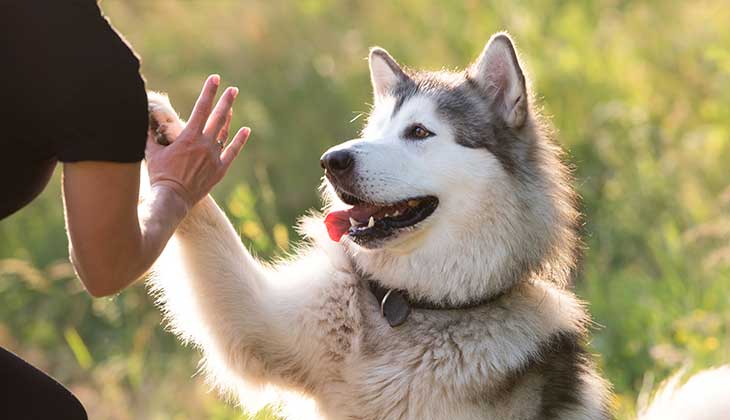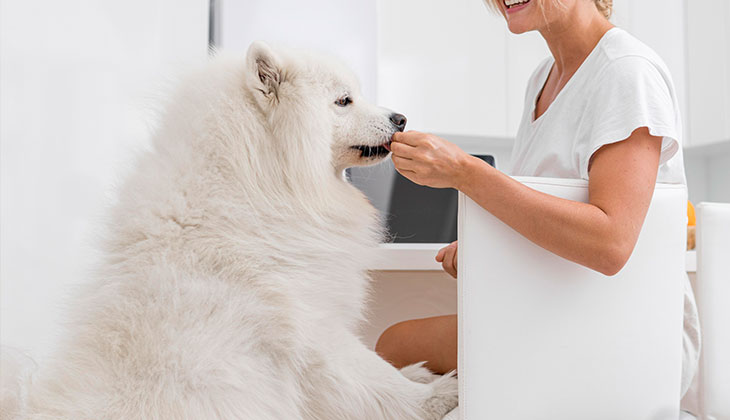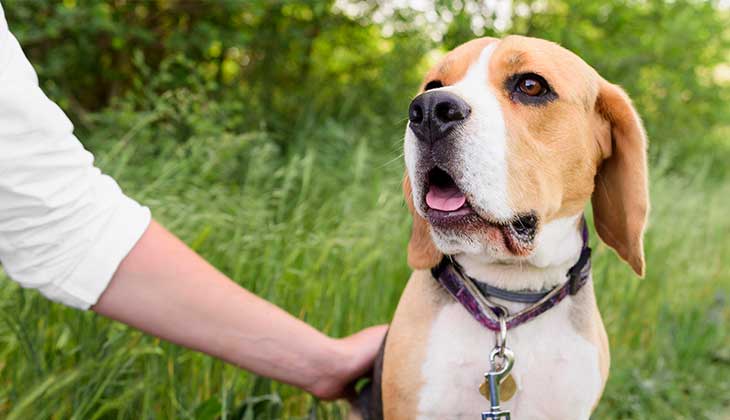If you’re concerned your precious pooch might have diabetes, or are wondering how to monitor your dog’s progress, you are not alone. Diabetes affects an estimated 1 in 300 dogs, but because this disease is believed to be underdiagnosed, this number is most likely higher. While diabetes is most common in middle-aged and older dogs (4-14 years of age), it can be diagnosed in dogs of any age. The cause of canine diabetes is largely unknown, but experts believe genetics play a role.
Diabetes commonly occurs when your dog’s body makes too little or no insulin and this leads to higher than normal amounts of glucose, or sugar, in your dog’s blood. The build-up of glucose in the blood spills over into the urine, which draws out large volumes of water, resulting in increased frequency of urination, and increased thirst. There is not enough energy in the body’s cells for them to function normally and they begin to use protein and fat as alternative sources of energy leading to weight loss, sometimes with increased appetite.

How Do I Monitor My Dog’s Signs?
There are several signs of diabetes that your vet may ask you to monitor and record in order to understand how your dog is doing. A dog that is doing well should have few or no signs of diabetes (normal thirst, urination, and appetite and a stable body weight) and should eat and drink similar amounts as a non-diabetic dog of the same breed, age and weight.
Monitoring your dog’s progress is important for managing diabetes and it can be done in several ways, and often with the help of some nifty devices that can keep you connected to your dog!
Monitor Activity
Regular exercise is an important part of managing diabetes. This means that it is helpful to know what your canine friend is doing throughout the day and how much energy he or she is expending.
Using an activity and behaviour tracker can help you stay informed and monitor progress through connected pet technology.
A connected pet door works with your dog’s RFID collar and allows you to monitor how often your pooch goes outside and for how long.
Eating Habits
There are dog food bowls and feeders on the market that will help you stay informed about when and how much your dog is eating throughout the day.

Measure Water Intake (and Output)
This is a simple and easy way to assess how blood glucose changes. Diabetic dogs drink more water when their blood glucose is higher than normal. Decreases in blood glucose during insulin treatment will be mirrored by decreases in water intake. Patterns of water intake do not detect blood glucose values that are too low. However, this will occur when the insulin dose is too high for your dog’s needs which is usually followed by high glucose levels, and will lead to your dog drinking more. A decrease in urination reflects a decrease in blood glucose levels but will also not detect blood glucose values that are too low.
You can measure how much water your dog drinks by adding a known amount of water using a measuring jug when you top up your dog’s water bowl.
You can also assess how much your dog is urinating by counting the number of times your dog needs to go out to urinate or whether your dog wakes you up at night because he or she needs to go out. This is called “nocturia.”
Signs of Happiness
Other signs that signal how well controlled your dogs diabetes is, include measuring and recording weight, body and coat condition and demeanour.
Urine Glucose and Ketones
Your vet may also ask you to measure levels of glucose and ketones in your dog’s urine. Your vet will be able to provide you with urine dipsticks and instructions for how to do this correctly. Ketones are produced when the body burns fat instead of glucose for energy.
Measuring Glucose
Once your dog is on insulin, your vet may recommend measuring glucose. This is particularly useful if your dog does not appear to be responding to the insulin treatment well or appears to relapse after a period of doing well. Glucose can be measured in blood using a handheld glucometer, which needs a small drop of blood (usually taken from the ear) several times a day and this can be done by your vet or may be done by you at home. Your vet might recommend a continuous glucose monitor which is implanted under the skin and takes measurements of glucose in interstitial fluid for up to 14 days.

Mobile Apps
Using pet diabetes apps enables you to track and manage your dog’s diabetes. Within the app, you can do things such as:
- Establish a monitoring routine that works with your schedule.
- Keep diary records of insulin dosing, food and water consumption, attitude and demeanour, body weight changes and blood glucose levels.
- Record blood glucose measurements and share them with your vet.
- Create alerts to remind you about routine monitoring, insulin injections, veterinary appointments and medication purchases.
Changes in Your Dog
If signs of diabetes seem to be worsening or are not improving, or if your dog experiences a recurrence of signs of diabetes or you notice any marked changes in your dog’s thirst, urination, weight, body condition, activity, attitude or behaviour, it is important that you consult with your vet. Your vet will advise you if your dog needs further tests or treatment.
Your vet plays a big role in your pet’s health. Enter your location and get a list of vets near you.
FIND A VET





 Austria
Austria  Belgium
Belgium  Czech Republic
Czech Republic  Denmark
Denmark  Finland
Finland  France
France  Germany
Germany  Greece
Greece  Hungary
Hungary  Ireland
Ireland  Israel
Israel  Italy
Italy  Netherlands
Netherlands  Norway
Norway  Poland
Poland  Portugal
Portugal  Romania
Romania  Spain
Spain  Sweden
Sweden  Turkey
Turkey  United Kingdom
United Kingdom